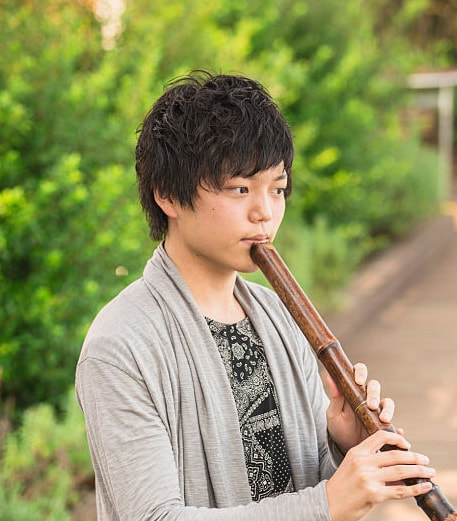|
A MATH DISCOVERY
On the day before the Chinese New Year Eakalak Wassanapong was counting on his fingers while the rest of his class was using calculator apps on their cell phones to complete a set of math problems. Actually Eak had finished the assignment and was returning to his own problem that fascinated him since his grandfather had informed him that tomorrow was to be a very special day for Eak. He was going to be 12 years old on the very day the Chinese year of the Pig started. It was his first 12-year cycle anniversary. He had been born in the year of the Pig. He wanted to see what happened when he counted in cycles using 12 digits. He was imagining he had 12 fingers as he tapped the numbers, counting in his mind, “1 2 3 4 5 6 7 8 9 10 11 12 11 10 9 8 7 6 5 4 3 2 1.” That was both one whole cycle as well as the first number of a second cycle. He had been working on this for more than a week. He imagined there were 12 holes on a bamboo flute as he counted from the top to the bottom and back. His right thumb was on hole number one. He thought to himself that was not as remarkable as the fact that if he counted from 1 to 13 and back to 1 using those 12 holes to keep track, he had to make 11 cycles to get back to the place where his right thumb was over the hole again counted as number one. What’s more, if he counted to 14 and back, it also took 11 cycles to come to his thumb in number-one position. If he counted to 15 and back, it took 11 cycles as well. In fact, every number from 13 to 22 took 11 cycles to get back to his right thumb on the first hole counting as 1. There were 11 numbers between 13 and 22, and each one took 11 cycles to get back to number one under his right thumb as he imagined. Numbers 12 and 23 took only one cycle. Eak was amazed at this. Eak was a bit excited. He had begun this investigation imagining his flute had 4 holes. The holes were numbered in his imagination as 1 2 3 and 4. If he began with his first finger on hole number one and counted to 4, his little finger was on hole 4, and then back to one where he’d started. That was one cycle. But if he counted to 5 using the 4 holes, he had to make 3 revolutions to get to the point where one was his first finger again. If he counted to 6 and back it also took 3 revolutions counting 1 2 3 4 5 6 5 4 3 2 1, going back and forth over the 4 holes, to get to the place where number 1 was his first finger on the first hole. Counting to 7 and back was one cycle. Counting to 8 and 9 took 3 cycles each. The pattern was 1 3 3, 1 3 3 over and over for a flute with 4 holes. If the flute had 6 holes the pattern was 1 5 5 5 5: one cycle from one to six and back, and then it took 5 revolutions if he counted from 1 to 7 and back, and also 5 revolutions each to count to 8, and to 9. During the month or so he had discovered that there was a pattern. If the flute had an even number of holes, 4, 6, 8, 12, and probably 14, 16, 18, the pattern was one cycle followed by an odd number of cycles that was one less than the number of holes. For 4 holes the pattern was 1, 3, 3 over and over. For 6 holes the pattern was 1, 5, 5, 5, 5 over and over. Eak was now sure that the pattern for 24 would be 1 cycle of 1 to 24 and back to 1, followed by 22 cycles of 23 revolutions to get back to number 1 being on the first hole of the flute. He had also discovered that when the number of holes was odd, the number of repetitions was not identical, but it was symmetrical and repetitious. If there were 5 holes in the flute, the pattern was 1 4 2 4. So, it took just 1 repetition of 1 to 5 and back to his thumb over the first hole as number 1. It took 4 repetitions counting 1 to 6 to get back to his thumb on the first hole as number 1. It took 2 repetitions to count from 1 to 7 and back and 4 repetitions to count from 1 to 8 and back on a five-hole flute. Then the pattern repeated, endlessly, 1, 4, 2, 4, over and over. But when there were 10 imaginary holes, the pattern was asymmetrical. Decimal numbers were exceptional. The pattern was 1 9 9 3 9 9 3 9 9. Eak had a feeling that this fact was important, but he didn’t spent effort wondering how it made counting based on other numbers useful. In a couple of years he’d be astounded at the uses of the number 9. Eak did not spend much time wondering what use this discovery might have. Even at age 12 he knew that the fact this pattern exists meant that it expressed something basic about the structure of reality. That was enough for this special New Year’s Day and birthday.
0 Comments
Leave a Reply. |
AuthorRev. Dr. Kenneth Dobson posts his weekly reflections on this blog. Archives
March 2024
Categories |
| Ken Dobson's Queer Ruminations from Thailand |
|

 RSS Feed
RSS Feed
